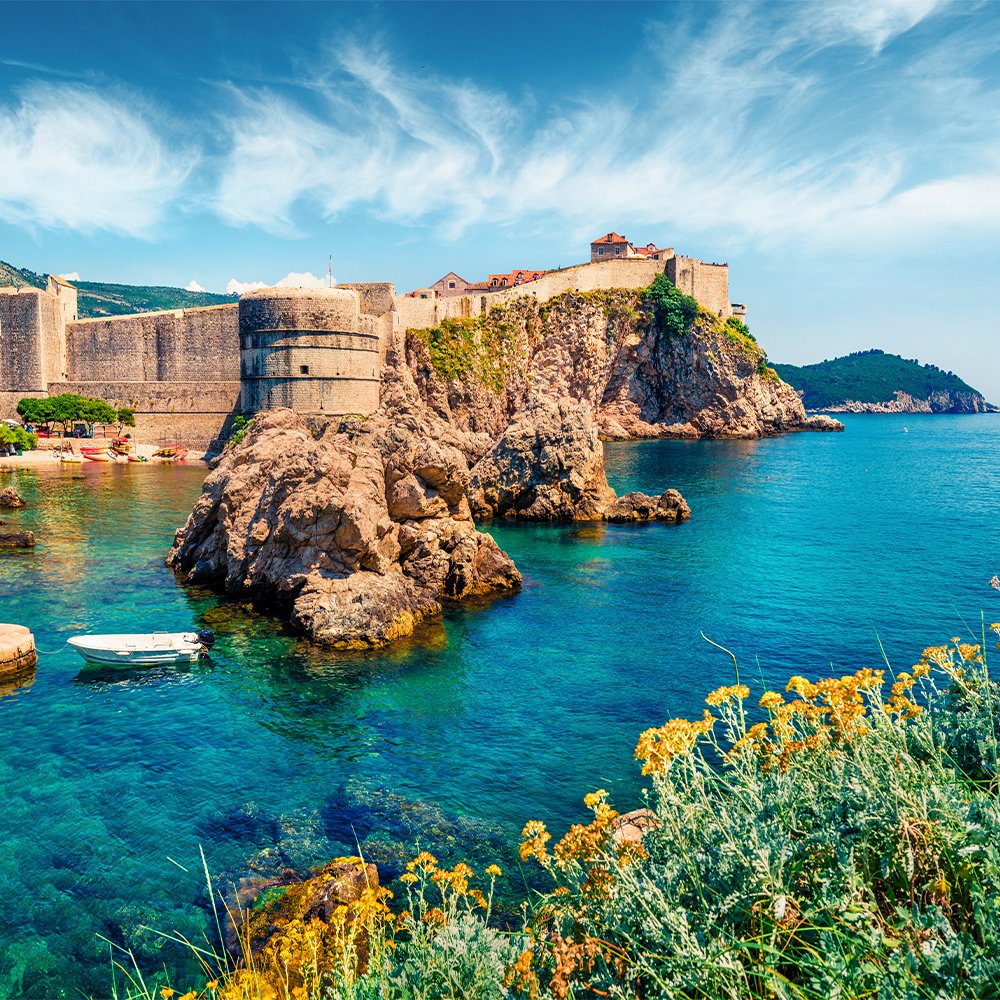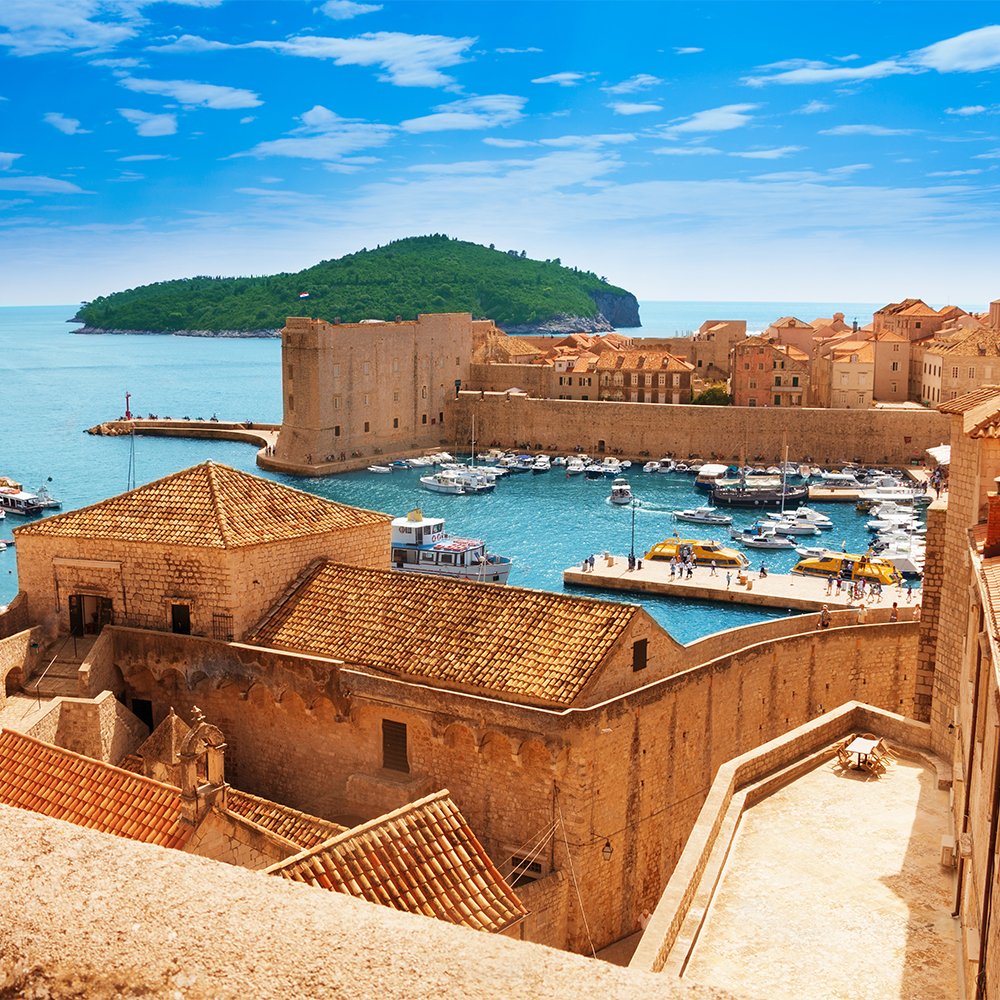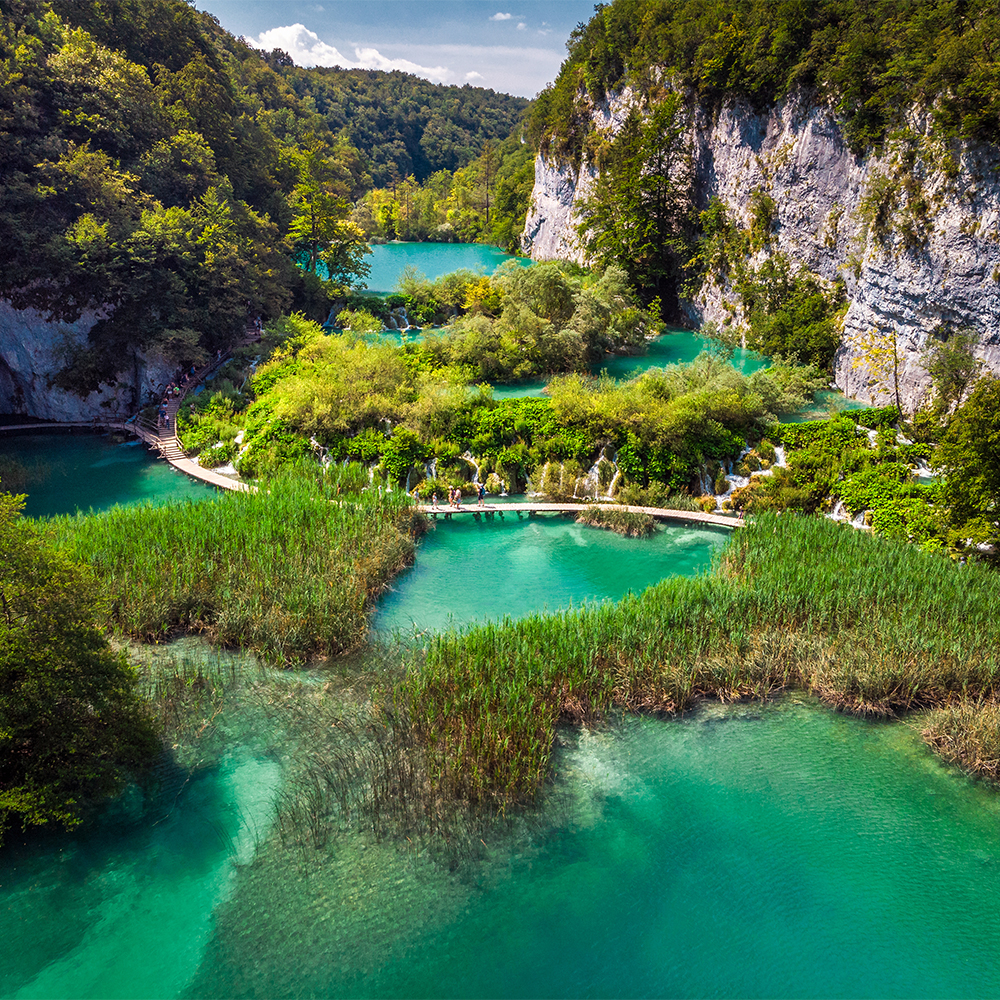Croatia






Overview
Croatia is a country located in the south-east Europe. It is located in the east of the Adriatic Sea, east of Italy. It also borders Slovenia to the north-west, Hungary in the north, Bosnia and Herzegovina south-east, Serbia to the east, and Montenegro to sud. The lands that today comprise Croatia were part of Austro-Hungarian Empire until the end of World War I in 1918, the Croats, Serbs and Slovenes formed a kingdom known after 1929 as the Yugoslavia. After World War II, Yugoslavia became an independent communist state under the strong hand of Marshal Tito. Although Croatia declared its independence from Yugoslavia in 1991, it took four years of sporadic, but often bitter, fighting before occupying Serb armies were largely eliminated from the land of Croatia. Under UN supervision the last Serb-held enclave in Eastern Slavonia was returned to Croatia in 1998. Croatia occupies the largest area of the east coast of the Adriatic Sea, which, as a part of the Mediterranean, penetrates deep into the European continent. The narrow Dinara mountain range separates the country’s Mediterranean region from its central European continental part, which stretches from the eastern edges of the Alps in the north-west on the banks of the Danube in the east, which includes the southern part of the fertile Pannonian lowlands. If your Mediterranean fantasies have warm days by sapphire waters, the shade of ancient walled cities, Croatia is the place to turn them into reality. Precariously balanced between the Balkans and Central Europe, this land has been passed between competing kingdoms, republics and empires for millennia. If there is a positive side of this ongoing dislocation, it is the rich cultural heritage that everyone has left behind. Venetian buildings huddle to Napoleonic forts, Roman pillars protrude from the first Slavic churches and palaces Viennese clash with sculpture of Socialist Realism. Excellent museums showcase treasures from the most fundamental stages of European history, which tell a story that is equal parts fascinating and horrifying. If you’re lucky enough to cross the barrier visitor / guest and be invited to a local home, it’s easy to know the refrain ‘Jedi! Jedi! Jedi! ‘(Eat! Eat! Eat!). No wonder that the sharing of food and drink play such an important role in the culture here, when the country is blessed with such high-level ingredients from land and sea. Simple cooking is a feature of family run tavernas, but more and more a new generation of chefs are bringing a more adventurous approach to the table. Meanwhile Croatian wines and olive oils are making their mark on the world stage, gaining top awards. To look away for a moment from the sparkling waters, chances are you will see a powerful frame of mountain views. Dinaric Alps, which stretch from ‘Italy in Albania, spanning much of the coast. The limestone karst bequeathed to the wonderland of rocky peaks, underground caverns, river canyons, spectacular waterfalls and lakes ridiculously picturesque. The most active will find plenty of opportunities to get numerous hiking and biking trails. Extraordinary coast island – spotted in Croatia is unquestionably its main attraction. Part of the appeal lies in its diversity. You will find the glitz and glamor in places like Hvar, where yachts and fancy threads are more elaborate penalty. In other, Croatian families are busy with buckets and spades, with popular Aussie backpacks and flip-flops and German naturists are freed from the tyranny of clothing altogether. For those who want peace and quiet, there are plenty of bays and islets in Robinson Crusoe style to discover.
Highlights
Over 1000 islands, of which only a few are inhabited. 7 UNESCO protected sites, including one of the most beautiful walled cities in the world, the city of Dubrovnik Croatia is a real GEM. Plitvice – a verdant maze of paths, woods and meadows revolves around 16 sparkling lakes and crashing waterfalls at the park. It’s a World Heritage site.
Fast Facts
The official currency of Croatia is the ‘Kuna”, a name which comes from a furry animal of the rodent family, the furs of which were used for purchases prior to modern currency. The population of Croatia is approximately 4.3 million people with approximately 52% of it being female and 48% male. The official language in Croatia is Croatian.
Good to Know
Events
Croatia Boat Show takes place between the 13th and 17th of April in Split, where boat enthusiasts can enjoy the display of famous Croatian and International nautical brands. Ultra Europe Festival is definitely one of the most coveted modern music festivals taking place between the 15th and the 17th of July in Split, the Islands of Brač, Hvar and Vis.
BOSNIA & HERZEGOVINA, CROATIA, SLOVENIA & ITALY 7 NIGHTS / 8 DAYS FROM SARAJEVO TO VENICE
Arrival at Sarajevo International Airport and transfer to Radon Plaza Hotel. Check-in at Radon Plaza Hotel. Dinner and overnight stay at radon Plaza Hotel in Sarajevo. (D)
American buffet breakfast at hotel in Sarajevo. Start the sightseeing tour of the city by local English speaking guide. At midday in Sarajevo, muezzins call from minarets as church bells echo through the Dinaric Alps. Street cars rumble past hookah smokers and cafe goers. The city’s charisma is intoxicating. The creative spirit that Sarajevans fought to preserve is very much in evidence these days. Neighborhoods, cradled in this valley and ringing the foothills, are fertile entrepreneurial grounds and a testament to the epochs that came before. Cafes, theaters, boutiques and restaurants have sprouted among buildings in myriad styles, including Ottoman, Secessionist, Communist and modern. And locals and visitors alike are rediscovering the surrounding mountains on the slopes that hosted the 1984 Winter Olympic Games. In Sarajevo we will visit the Tunnel of Hope, Gazi Husrev Pasha Mosque, Bascarsija, Latinski Bridge etc. Lunch and dinner will be organized at Halal restaurant in the city. Overnight stay at Radon Plaza hotel in Sarajevo. (B, L, D)
Early morning departure from Sarajevo toward Mostar which is situated in the center of Herzegovina. The year 2004 marked the rededication in Mostar of the historic bridge built by the Ottomans in 1566 and destroyed in 1993. Visit the city sights of Mostar, a city on the Neretva River in Bosnia & Herzegovina. On this day we will see the Old Bazaar, the Turkish House and historical mosques. After a guided tour of town, you will have free time to visit the old craft shops or enjoy a traditional Turkish lunch at a Halal restaurant. After lunch depart toward Split. Arrival in Split and have a brief sightseeing tour of the city. We will enjoy a city tour featuring the historic inner city, built around the Roman Emperor Diocletian’s Palace, a UNESCO World Cultural Heritage site. See the remnants of Split’s Roman heritage, its Renaissance and Gothic structures, Jupiter’s Temple, the Peristyle, and the Cathedral. Dinner at fish restaurant in the old town. Overnight stay at Radisson Blu Hotel in Split. (B, L, D)
After breakfast, we will head inland and travel to Plitvice Lakes National Park. Upon arrival, have your camera ready and take a walking tour around several of the lower lakes. Enjoy the breathtaking scenery of this natural wonder of 16 terraced lakes surrounded by thickly wooded mountains and lush vegetation. Lunch at local restaurant in Plitvice with fish menu. After lunch depart toward Zagreb where we check-in at Hilton Double Tree Hotel. Dinner and overnight at Hilton Double Tree Hotel in Zagreb. (B, L, D)
Start your day with a walking tour of Zagreb, the capital of Croatia. In the morning, we drive toward Zabreb. Once there, we will enjoy a city tour featuring the historic Upper Town, St. Mark’s Church, St. Catherine’s Church, the Cathedral, the Parliament, and the Government Palace. After the visit of Zagreb continue toward Bled. Drive toward Beld. A sightseeing tour of Bled features the charming town with the lakeshore and imposing Bled Castle perched on a cliff high above the lake. Drive back to Ljubljana for dinner at traditional Slovenian restaurant. Overnight stay at Plaza Hotel in Lubljana. (B, L, D)
Start your day with a walking tour of Lunljana, the capital of Slovenia. Visit the most significant sights of the old city center: the picturesque Central Open Air Market and the Three Bridges (both designed by famous architect Joze Plecnik), Baroque Town Hall, and Robba’s Fountain. After some free time, journey west to Postojna, home to one of the largest cave structures in Europe. Tour the fantastic subterranean world by miniature electric train. Afterwards, continue to Venice. Dinner and overnight stay at Concordia Hotel. (B, L, D)
Begin with two nights in timeless Venice, then enjoy a full-day walking tour of this Renaissance city, learning of its history and the tales behind its architectural icons and great works of art: the Doge’s Palace, Rialto Bridge, Saint Mark’s Basilica, and more. Next, immerse yourself in the la dolce vita, and spend 2 days exploring the famous Lake District. This captivatingly setting features royal hideaways, gardens, and stunning vistas. Lunch at fish restaurant in the town and farewell dinner at hotel in the city. Overnight stay at Concordia Hotel. (B, L, D)
In the morning transfer to the airport for your departure flight. (B)

